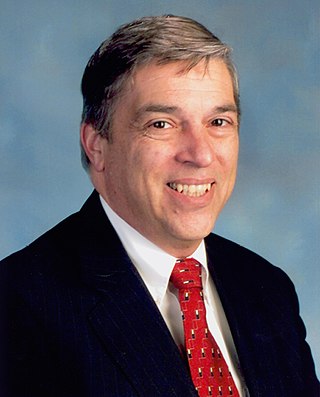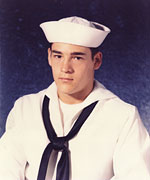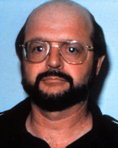
Cold War espionage describes the intelligence gathering activities during the Cold War between the Western allies and the Eastern Bloc. Both relied on a wide variety of military and civilian agencies in this pursuit.

Robert Philip Hanssen was an American Federal Bureau of Investigation (FBI) agent who spied for Soviet and Russian intelligence services against the United States from 1979 to 2001. His espionage was described by the Department of Justice as "possibly the worst intelligence disaster in U.S. history".

The seventh USS Ranger (CV/CVA-61) was the third of four Forrestal-class supercarriers built for the United States Navy in the 1950s. Although all four ships of the class were completed with angled decks, Ranger had the distinction of being the first US carrier built from the beginning as an angled-deck ship.

USS Pueblo (AGER-2) is a Banner-class environmental research ship, placed into service during World War II, then converted to a spy ship in 1967 by the United States Navy. She gathered intelligence and oceanographic information, monitoring electronic and radio signals from North Korea. On 23 January 1968, the ship was attacked and captured by a North Korean vessel, in what became known as the "Pueblo incident", or alternatively, as the "Pueblo crisis".

Robert Dean Stethem was a United States Navy Seabee diver who was murdered by Hezbollah members during the hijacking of the commercial airliner he was aboard, TWA Flight 847. At the time of his death, his Navy rating was Steelworker Second Class (SW2). He was posthumously promoted to Master Chief Constructionman (CUCM).

The United States Navy maintains a number of its ships as part of a reserve fleet, often called the "Mothball Fleet". While the details of the maintenance activity have changed several times, the basics are constant: keep the ships afloat and sufficiently working as to be reactivated quickly in an emergency.

USS Albuquerque (SSN-706) was a Los Angeles-class attack submarine of the United States Navy. She was the second U.S. warship to be named for Albuquerque, New Mexico. The contract to build her was awarded to the Electric Boat Division of General Dynamics Corporation in Groton, Connecticut, on 31 October 1973 and her keel was laid down on 27 December 1979. She was launched on 13 March 1982, sponsored by Nancy L. Domenici, and commissioned on 21 May 1983.
Operation Ivy Bells was a joint United States Navy, Central Intelligence Agency (CIA), and National Security Agency (NSA) mission whose objective was to place wire taps on Soviet underwater communication lines during the Cold War.
Samuel Loring Morison was a former American intelligence professional who was convicted of espionage and theft of government property in 1985 and pardoned in 2001. He was "the only [American] government official ever convicted for giving classified information to the press."

A spy ship or reconnaissance vessel is a dedicated ship intended to gather intelligence, usually by means of sophisticated electronic eavesdropping. In a wider sense, any ship intended to gather information could be considered a spy ship.
Harry Thomas Thompson was a United States Navy yeoman who spied for Japan against the United States in 1934–35. He was the first American to be convicted of espionage after World War I.

USS Niagara Falls (AFS–3), a Mars-class combat stores ship, was the only ship of the United States Navy to be named after the City of Niagara Falls, New York. Commissioned into the US Navy on 29 April 1967, she served until September 1994, when she was transferred to the US Military Sealift Command to serve as USNS Niagara Falls (T-AFS-3). Assigned to the Naval Fleet Auxiliary Force, Far East, she served until 30 September 2008, when she was finally deactivated.

Radioman (RM) was a rating for United States Navy and United States Coast Guard enlisted personnel, specializing in communications technology.
This page is a timeline of published security lapses in the United States government. These lapses are frequently referenced in congressional and non-governmental oversight. This article does not attempt to capture security vulnerabilities.

The Duquesne Spy Ring is the largest espionage case in the United States history that ended in convictions. A total of 33 members of a Nazi German espionage network, headed by Frederick "Fritz" Duquesne, were convicted after a lengthy investigation by the Federal Bureau of Investigation (FBI). Of those indicted, 19 pleaded guilty. The remaining 14 were brought to jury trial in Federal District Court, Brooklyn, New York, on September 3, 1941; all were found guilty on December 13, 1941. On January 2, 1942, the group members were sentenced to serve a total of over 300 years in prison.
The American media referred to 1985 as the Year of the Spy because law enforcement arrested many foreign spies operating on American soil. However, the preceding year, 1984, actually had more arrests for espionage in the United States.

Information systems technician (IT) is a rating for United States Navy and United States Coast Guard enlisted personnel, specializing in communications technology. Information systems technician submarines (ITS) is a rating for U.S. Navy submariners. The Information systems technician (IT) rating corresponds to the new Navy Occupational Specialty (NOS) code B460 while the information systems technician submarines (ITS) rating corresponds to Navy Occupational Specialty (NOS) code C260.
Family of Spies, also known as Family of Spies: The Walker Spy Ring is a 1990 TV movie based on the espionage of John A. Walker Jr. The film was directed by Stephen Gyllenhaal and starred Powers Boothe as John Walker.

John Anthony Walker Jr. was a United States Navy chief warrant officer and communications specialist convicted of spying for the Soviet Union from 1967 to 1985 and sentenced to life in prison.

Itaru Tachibana was a Japanese spy active in the United States.













